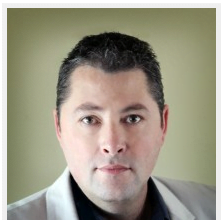Many conventional doctors are hesitant to embrace integrative medicine as part of their treatment programs because of misperceptions about its efficacy. The source of the confusion? For years, complementary and alternative medicine were grouped together, so doctors often assume integrative medicine means patients are missing out on necessary care.
In reality, and as defined by the National Institutes of Health (NIH), integrative medicine “involve[s] bringing conventional and complementary approaches together in a coordinated way.” This approach can provide physical and mental support, improving patient outcomes beyond the abilities of conventional medicine in these three proven ways.
Improved Mental Health
One of the most significant benefits of integrative medicine is in the area of mental health and spiritual well-being. Patients with serious health problems often develop depression and anxiety due to the stress of treatment, and many primary care providers feel ill-equipped to handle these issues. Integrative medicine professionals, however, are skilled at promoting mindfulness as part of patient care.
What does this look like in practice? Christina Fernandez, senior vice president for mission integration and spirituality at Dignity Health, explains that at their practice, they focus on the sacred nature of the relationship between providers and patients and their families. This allows them to focus on delivering care based on each patient’s desires, which includes spiritual and psychological care and occupational therapy to help patients regain or maintain function.
In addition to supporting patients who are experiencing crisis-related stress, integrative medicine practices, including mindfulness and meditation, have been shown to help with more long term mental health issues, as well. Contemplative meditation, transcendental meditation, and other cognitive modification modalities can reduce symptoms of PTSD. In combination with medication changes, patients who were once severely disabled by past trauma can resume their normal lives with minimal impairment.
Enhanced Collaboration
Another important element of integrative medicine is its emphasis on collaboration between providers. Many conventional care providers work in a bubble – only the sickest patients qualify for a team approach. Experts in integrative care, on the other hand, believe that every patient has a “medicine wheel” consisting of many different types of providers. That wheel includes conventional clinicians in various specialties, massage therapists, spiritual providers, and even family members; they all come together to provide for the patient.
Growing rates of chronic disease may also be contributing to increased collaboration between specialists, with the support of integrative medicine providers. These patients may have numerous specialists and require long-term care, even if they are infrequently emergent. With this in mind, doctors like Brenda Powell, co-director of Cleveland Clinic’s Center for Integrative & Lifestyle Medicine, have deemed integrative medicine the gold standard for chronic disease management, particularly when chronic pain is a central issue. For these patients, integrative care is vital to minimizing secondary condition development, and it can enhance communication between providers at different locations and in different specialties.
Reduced Care Disparities
Healthcare disparities based on race and class are among the most serious problems facing medicine today. Low-income individuals and patients of color consistently receive less care and poorer quality care than their wealthier, white counterparts. Integrative medicine, however, emphasizes practices that increase emotional and physical resilience to the stress of poverty, uses simple, widely accessible approaches to improve health like better nutrition, and connects patients with complementary medicine providers in the community for services like massage or acupuncture. It’s care that emphasizes equity over income.
Integrative care has even shown a high level of success managing health issues common to oppressed communities. For example, acupuncture has been shown to relieve back pain, headaches, and pain from rheumatoid arthritis. Chronic pain is overrepresented in low-income communities, particularly in areas where manual labor is a major source of income. Since individuals of color are less likely to be prescribed adequate pain relief and because the opioid epidemic is ravaging low-income communities, using acupuncture to manage chronic pain is an ideal alternative.
Despite suspicion of alternative treatment protocols, integrative medicine shouldn’t be ignored or treated as less valuable than conventional care. Rather, doctors and patients alike need to understand that integrative medicine does not require anyone to forego standard treatments, but rather helps connect the added supports and services they would likely call upon anyway.
We have a tendency to sequester physical health from mental health or conventional medicine from complementary modalities, they were designed to work together. By reuniting them, integrative medicine practitioners are enhancing care, not diminishing it. We have the evidence that integrative care works, but that evidence only matters if we’re willing to trust and work through the process with our patients.








